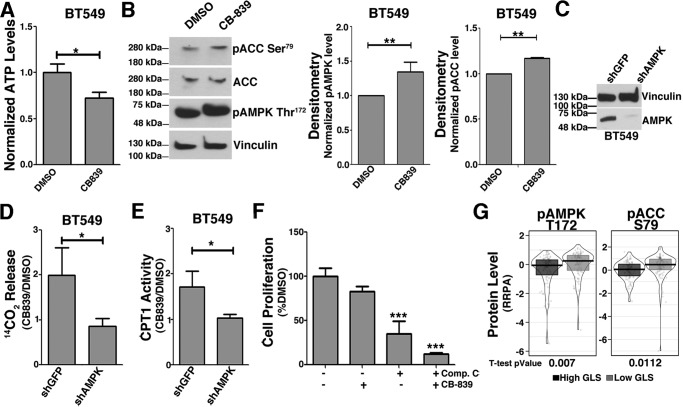Figure 8.
GLS inhibition increases AMPK Thr-172 and ACC Ser-79 phosphorylation levels with a direct effect on β-oxidation. A, relative ATP levels in DMSO- and CB-839-treated BT549 resistant cells showing a 27% decrease with treatment. B, CB-839 treatment increases AMPK Thr-172 and ACC Ser-79 phosphorylation levels in BT549 cells related to total vinculin and ACC levels, respectively. C, Western blot showing AMPKα knockdown in BT549 cells. D and E, in BT549 cells, CB-839 treatment increases 14CO2 released from [14C]palmitic acid (D) and CPT1 activity (E) (compared with DMSO) in shGFP control cells but not in shAMPKα cells. F, proliferation of BT549 cells after CB-839 and compound C (an AMPK inhibitor) individual or combined treatment, showing that the resistant cell line relies on AMPK signaling for growth after glutaminase inhibition. G, breast tumor tissues with low GLS expression levels have increased AMPK Thr-172 and ACC Ser-79 phosphorylation levels compared with tissues with high GLS levels. The data in A and D–F represent the mean ± S.D. of n = 3. The data in B represent the mean ± S.D. of n = 4 (pAMPK) and n = 2 (pACC) independent western blots. The boxplot in G represents 111 tumors with high and 111 with low GLS gene expression, obtained from the reverse-phase protein array (RPPA); these samples overlap with the breast tumor samples obtained from the TCGA presented previously in the transcriptomics analysis. Student's t test was applied. *, p < 0.05; **, p < 0.01; ***, p < 0.001.

